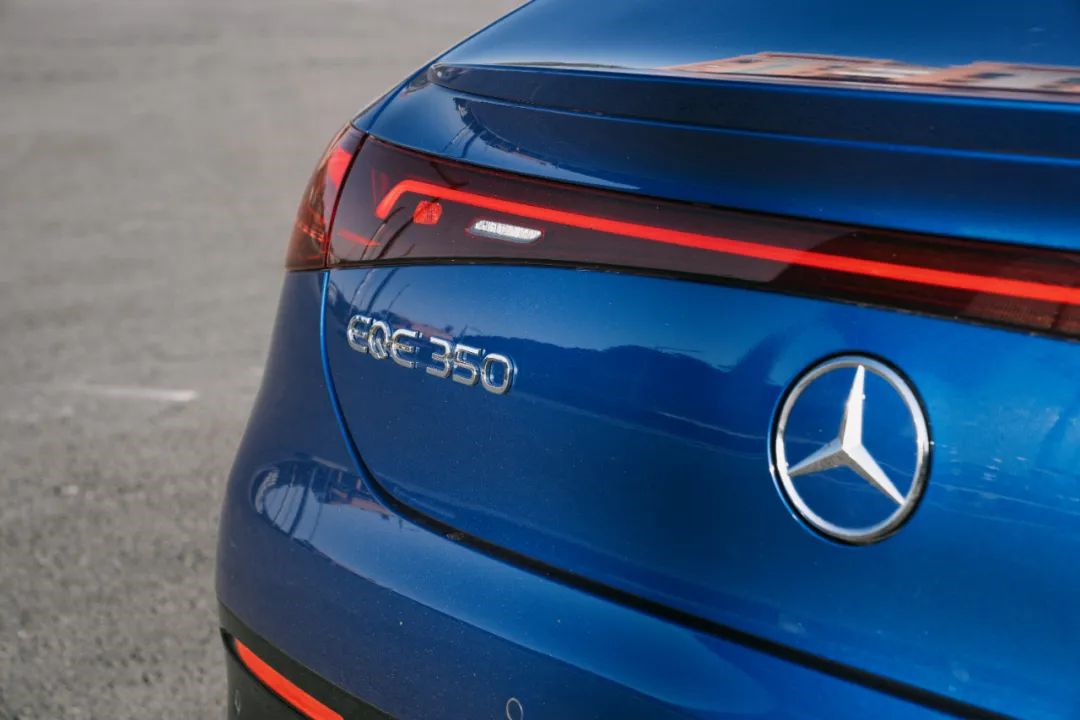Author: Jingtao Wu
1 million tranquility, 500,000 price, 200,000 power level.
When we talk about “different opinions”, what first comes to your mind? Is it the difference in taste preferences between you and your colleagues when it comes to food, or the difference in music styles between you and your friends?
In our lives, “different opinions” is definitely a global problem that appears around us all the time. In the field of electric vehicles, this problem is particularly prominent. Taking our editorial department as an example, there are often two different groups of opinions when it comes to the evaluation of the same electric vehicle.
On one side are the “hybrid” users who alternate between traditional fuel vehicles and electric vehicles, and on the other side are the “new energy” users who use new energy models as their daily main transportation vehicles. Both parties often have different feelings about specific user experience, and even opposite opinions.
The communication and friction between these different viewpoints occasionally brings us new perspectives and ideas in content creation, and also adds to the fun of colleagues teasing each other at work. But it also made us quite curious about when there will be another electric vehicle that can unite the opinions of both sides, and make them both feel “in tune”.
It wasn’t until last week that we borrowed the freshly launched Mercedes EQE, and this long-awaited harmonious scene finally reappeared.
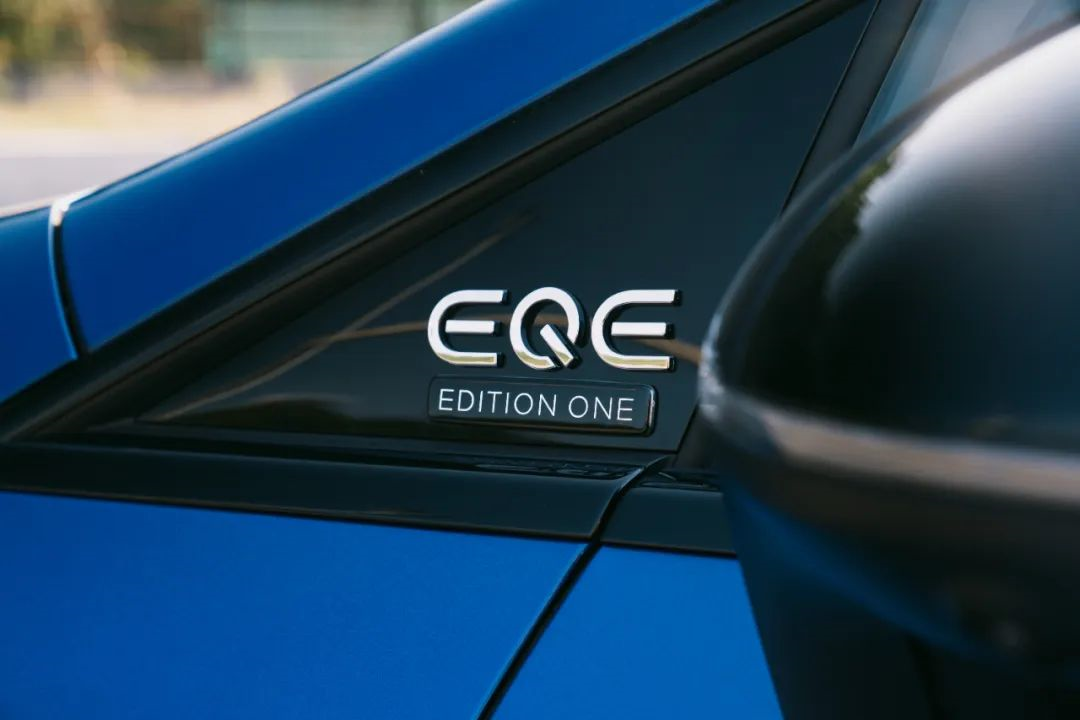
Still familiar “Benz”
As usual, let us first introduce the basic information of the car model we received. We experienced the highest configuration of the Mercedes EQE model currently available, the 350e special edition, which is priced at 585,000 yuan. The body size is 496919061514mm, and the wheelbase is 3120mm.Equipped with a 96.1kWh battery pack, the CLTC cycle range of EQE is 717km. It employs the rear-wheel-drive single-motor drive system, with a maximum power of 215kW and torque of 556 N·m. The official 0-100km/h acceleration time is 6.7 seconds.
In terms of appearance, EQE continues Mercedes-Benz’s “from large to small” design sequence from the era of fuel-powered vehicles. Therefore, EQE’s design style is highly similar to its elder brother EQS.
In the era of electrification, from the “technical totems” EQXX with a range of more than 1,000km on a single charge to the flagship EQS that subverts the design style of the fuel-powered vehicle era, the core demand for Mercedes-Benz’s electric vehicles in terms of exterior design can be summarized in six words – low wind resistance and high efficiency. EQE is no exception, with a drag coefficient of only 0.22Cd.
Although it is not the lowest in its class (the lowest being the NIO ET7 with 0.208Cd), it has no pressure to be on the list of the “global production car drag coefficient ranking.”
Compared with its elder brother EQS, the biggest difference in the entire front of EQE is the removal of the LED light strip design on the EQS. However, in sufficient daylight, the two front ends are almost identical.As mentioned above, this is a tried-and-true design technique that Mercedes-Benz has been using for years. With the EQE, you can buy a car that looks very similar to the EQS for half the price. Who can resist saying “delicious” when they see it?
Meanwhile, the EQE’s front end continues to use Mercedes-Benz’s “Star-pattern” fully enclosed grille, which is adorned with an abundance of Mercedes-Benz logos that light up the grille at night, adding a touch of luxury to the car’s visual appeal.
Every time I see this design, it reminds me of the classic example of “Cans of Campbell’s Soup” in Art Appreciation.


The EQE’s side profile uses the same “bow-shaped body” design as the EQS, with a strong emphasis on reducing wind resistance. In fact, many people feel that Mercedes-Benz’s mass-produced electric cars look like streamlined ergonomic mice from the side.
Because the EQE is 25.8CM shorter than the EQS, it has a noticeably more compact side profile, particularly in the C-pillar design. Due to the car’s length being less than 5 meters, the EQE’s roof line at the rear doesn’t have the same curved lines as the EQS.
 The left front fender continues to use the concealed design for the glass windshield washer filler mouth. It adopts a five-spoke low-resistance wheel hub with a tire model of PIRELLI P Zero and tire size of 255/40 R20.
The left front fender continues to use the concealed design for the glass windshield washer filler mouth. It adopts a five-spoke low-resistance wheel hub with a tire model of PIRELLI P Zero and tire size of 255/40 R20.


Compared to the EQS, the EQE’s tail design is more sporty and youthful. Not only is a set of air ducts added to the rear fenders, but also an all-black diffuser is installed under the bumper, making the visual hierarchy of the tail more abundant and more prominent.
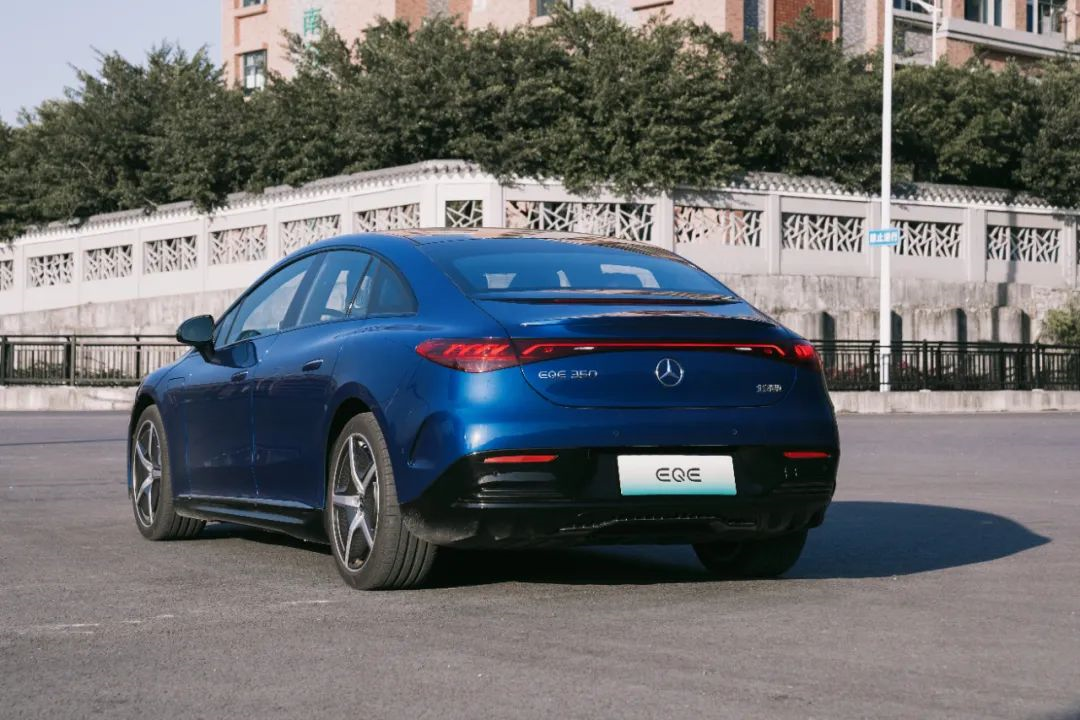
Regarding the interior, the EQE’s center console uses a traditional split-screen design, unlike the EQS’s triple-screen design. As an expert in creating a comfortable atmosphere inside the vehicle, the decor of the T-shaped area of the EQE center console is consistent with its appearance. The entire panel is embedded with a large number of emblems similar to the Mercedes-Benz logo, which will light up with the ambient light strip on the top of the center console, enhancing the interior atmosphere of the vehicle.
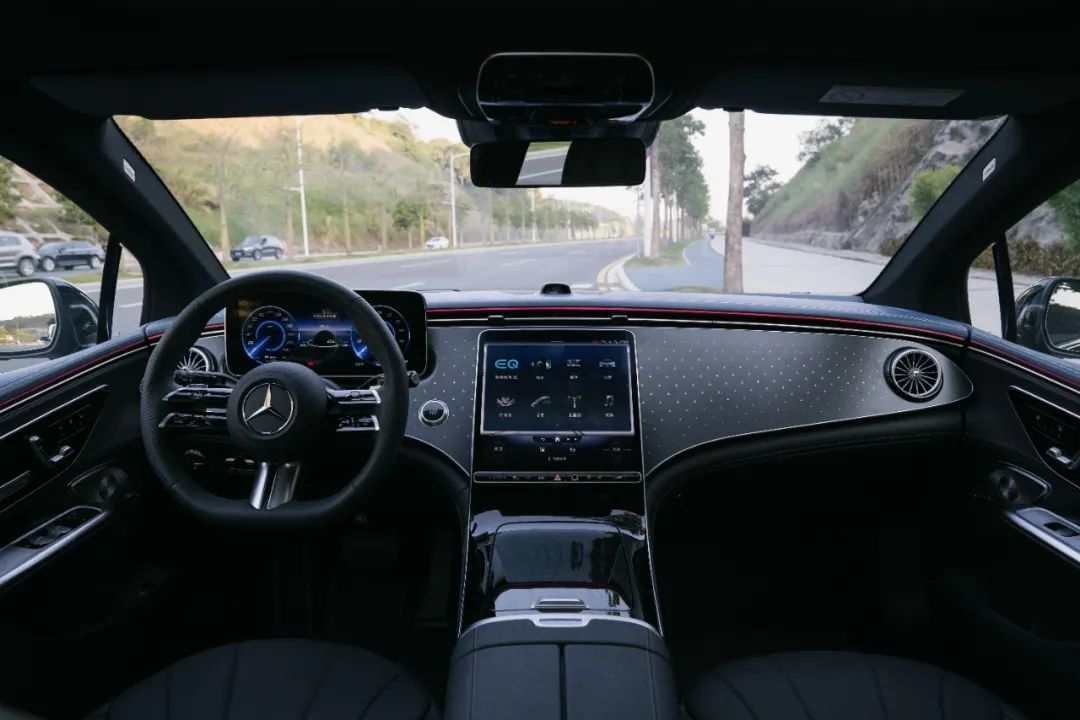

In daily use, as a product of a traditional luxury brand, EQE retains physical buttons for functions such as mirror adjustment, steering wheel adjustment, driving mode adjustment, and panoramic imaging, which are more easily accepted by traditional brand car owners and have lower operating costs.
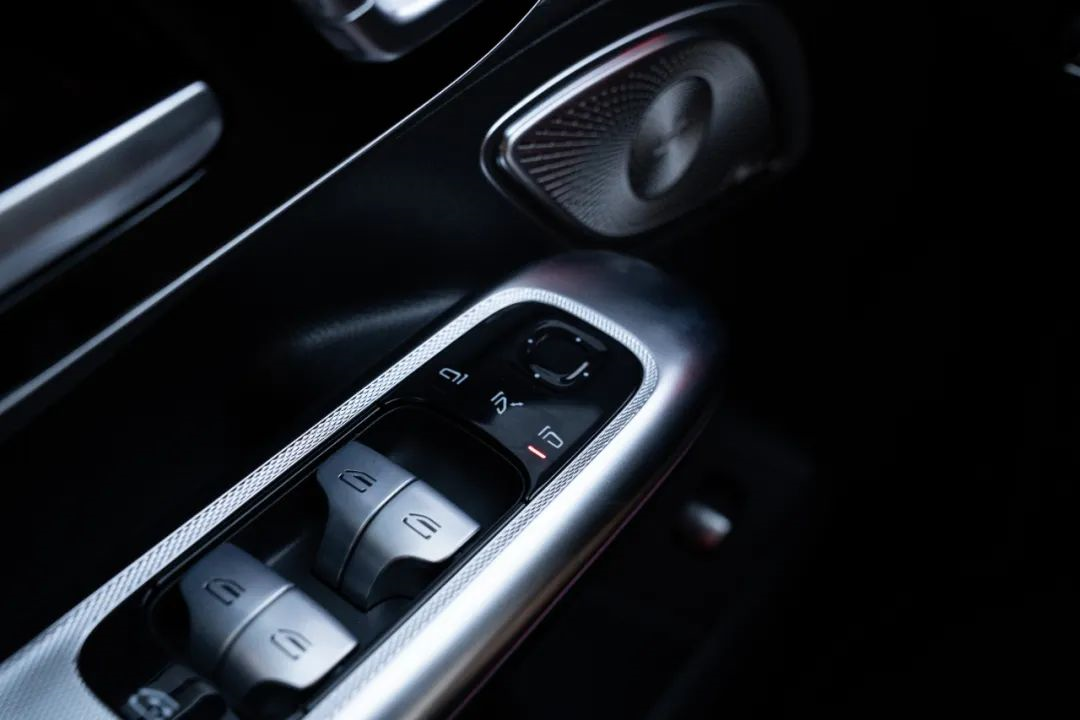
In terms of static riding experience, the human-machine engineering design, functions, and adjustment range of the front seats of EQE are all in line with the high standards of Mercedes-Benz, and it is difficult to find any shortcomings. The setting of the rear seats retains a strong “European flavor”, with a short seat cushion angle and a straight backrest angle, which is very consistent with the sitting habits of Europeans.
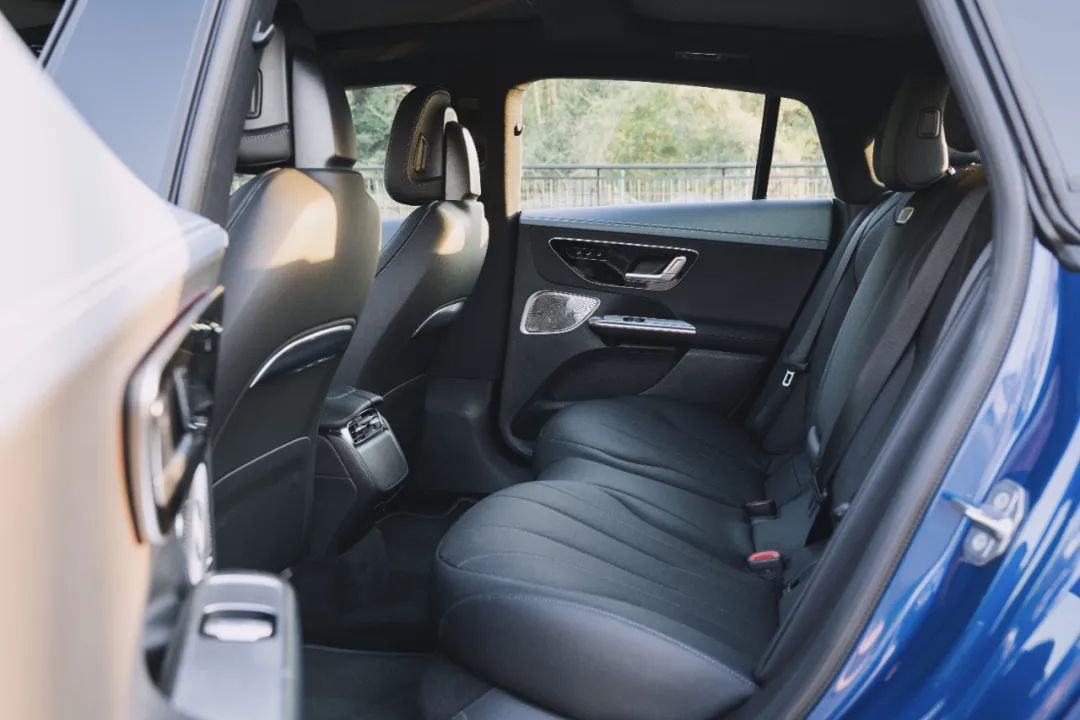
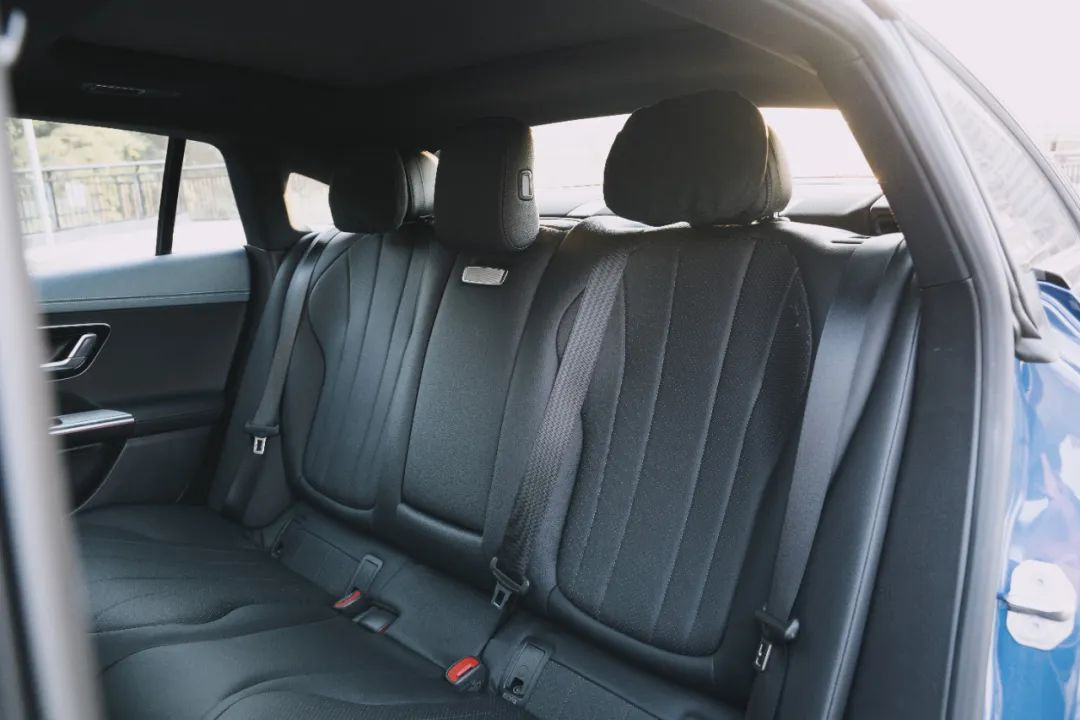
However, as a medium to large-sized sedan in China, if the rear seats of EQE can be adjusted to better cater to the various sitting postures of Chinese passengers, it would be more popular among Chinese consumers.
NVH “Everyone Praise”As mentioned at the beginning, due to the different daily driving habits and experiences of each individual, it is rare for an electric vehicle to be unanimously recognized by the editorial team. However, when we drove the EQE here, it achieved just that!
Quoting a comment from an owner of a certain German luxury brand rear-wheel drive sports car, on the driving quality of EQE — “This is a million-class NVH performance.”
Compared to the ride quality of the W213 generation fuel-powered E-Class that is often discussed by the public, the ride sensation of this EQE is truly impressive.
The most outstanding aspect is the NVH performance of the EQE during driving. Although our test drive vehicle used sport-oriented P ZERO tires and frameless doors, the NVH performance of the vehicle during driving is still quite remarkable.
Whether driving or riding, the EQE filters out the rough sounds and vibrations generated by the contact between the wheels and the road surface, providing a smooth and effortless feeling of gliding on a smooth road.
Not only does it leave a “sensory” impression, we also tested the interior noise level on a flat, smooth asphalt road with a decibel meter, and the results were superior as well. At a speed of 60 km/h, the measured value inside the car was 48.3dB, and at a speed of 80 km/h, the measured value inside the car was 52.3dB.
Although the price of EQE is not low, as a model one level lower than EQS, Mercedes-Benz still chooses to let EQS enjoy “advanced configuration,” such as air suspension, to maintain the positioning difference between the two models.
In actual experience, without the support of air suspension, the suspension performance of EQE is still deserving of the label of a traditional luxury brand.
However, in the face of road bumps and jumps, there is an obvious gap in the handling of EQE compared to “big brother” EQS. This is mainly reflected in the fact that the suspension is not soft enough for vibration filtering on the road, but compared with its comfortable-oriented chassis tuning, it can be more thorough in isolating “road information”.

But without air suspension, the overall riding experience of EQE still received unanimous praise from us, which is worth the money.
Power “entry-level”, experience “sophisticated”
The riding quality has won our unanimous recognition. How about the driving experience?
Firstly, for power, as a model with a price exceeding 50,000 yuan throughout the entire series, the EQE, with a single motor drive and 300 hp horsepower, is expected to pull the 2,400 kg body. It remains to be seen whether its power experience will be “tight.”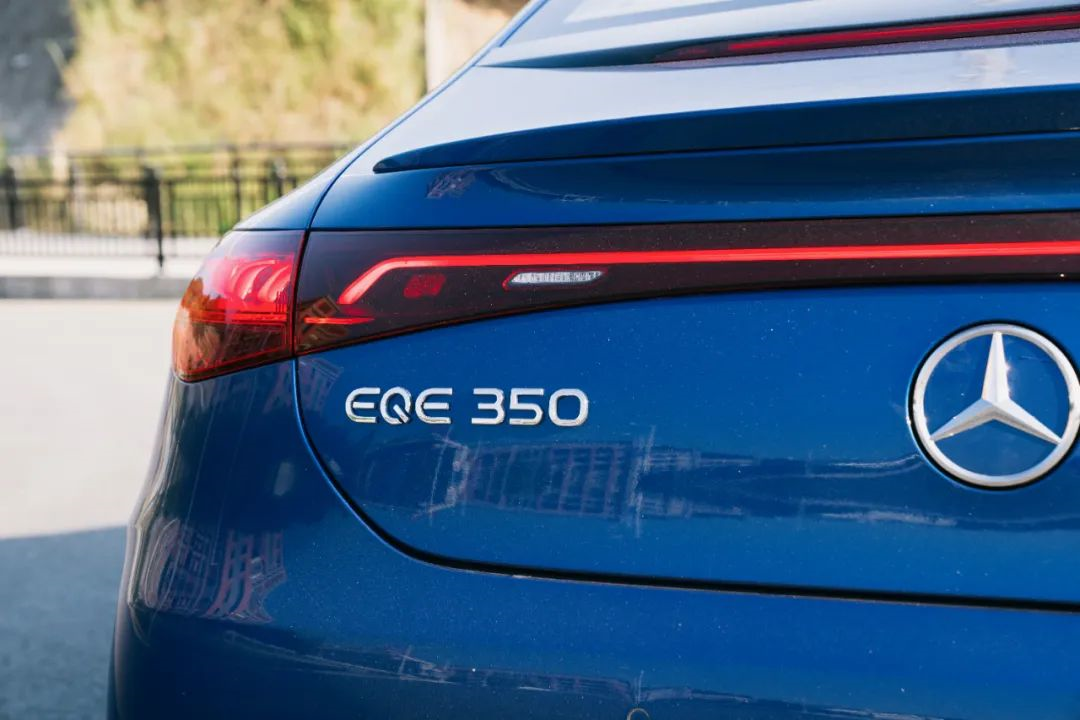
Compared to the “New Forces” brand, traditional automakers, especially luxury brands, still have strict power configuration hierarchies for pure electric models.
At present, the three EQE models launched in China are all entry-level 350 models. For models with four-wheel drive and dual motors in the German market, they also need to choose the top-of-the-line EQE 500 4MATIC or two AMG models.
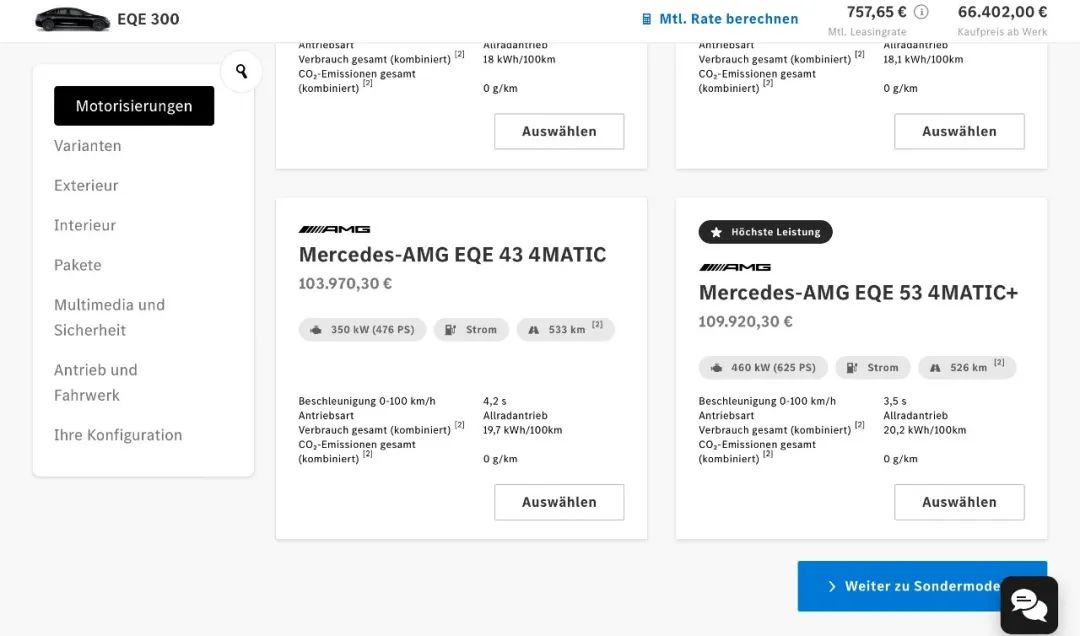
Returning to the specific power experience, as a traditional luxury brand model, the power output of this EQE is quite similar to the output characteristics of a gasoline vehicle. The proportion of pedal depression and power output is also similar to that of a gasoline vehicle.
Interestingly, this EQE also has a “Kick Down” button similar to a gasoline vehicle at the end of the energy-saving mode, and only when this section of power is forcefully depressed will full power be output, which is a “physical” energy-saving setting.
Although it is only equipped with a rear-mounted motor with “only” 292ps horsepower, as a pure electric vehicle, even in comfort mode, this EQE handles daily commuting with ease. Whether it is starting or accelerating, the power experience is not inferior to the mainstream 2.0T high-power models. Even in daily use, the 2.4-ton weight of the EQE does not significantly affect the power experience.Here is the translation of the Chinese Markdown text into English Markdown text, keeping the HTML tags inside:

However, the absolute power index is placed here. If you want the strong explosive force and beautiful power parameters of the four-wheel drive dual motor version, you can only wait for the subsequent launch of the 500 4MATIC model.
In terms of kinetic energy recovery, EQE is equipped with a 4-gear adjustable kinetic energy recovery force adjustment, which are: None, Standard, Enhanced, and Intelligent. In the Standard mode, when releasing the accelerator pedal, the vehicle’s coasting state is very similar to traditional fuel models. Even if it is adjusted to the Enhanced kinetic energy recovery gear, there is no obvious drag when releasing the accelerator pedal.
At the same time, a set of paddles are also equipped behind the steering wheel to adjust the kinetic energy recovery gear. This configuration is very traditional for car companies.

In terms of energy consumption, we did not conduct a specific power consumption test due to time constraints, but we will definitely find an opportunity to make it up for everyone in the future. After a day of testing and shooting after charging, including some intense driving conditions and starting the air conditioner for a long time, the final displayed energy consumption is 18.1kWh/100km.
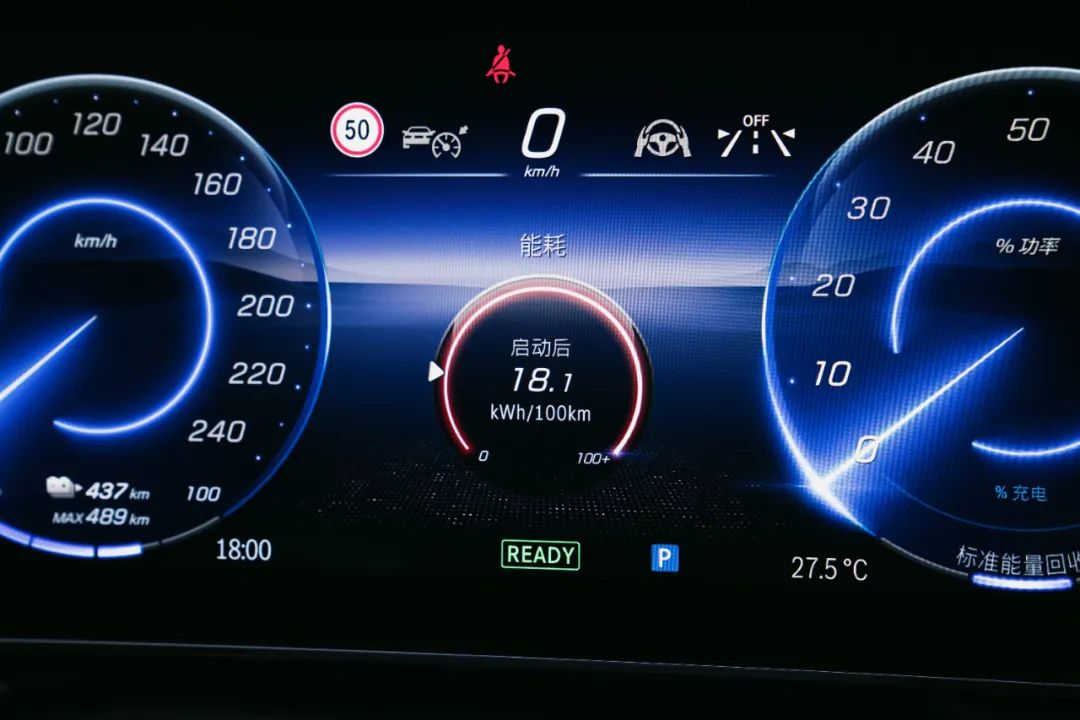
If it is only the daily commuting conditions, I believe that controlling energy consumption within 16kWh/100km is not too much of a pressure.In terms of steering, the EQE’s steering feel is completely biased towards comfort and is very suitable for the positioning of the vehicle. No matter what mode it is in, the steering of this car will not evoke any desire for intense driving. Coupled with its lightweight but not overly aggressive power, driving it on the road will only make you want to leisurely travel from point A to point B.
Although there are no highlights in the steering feel, the EQE 350 we received had the same rear-wheel steering system with a maximum angle of up to 10 degrees as the EQS, in terms of steering format. According to official data, equipped with this feature, the turning diameter of the EQE can be reduced to as low as 10.7 meters.
So far, we do not know whether the EQE will continue to adopt a subscription service for rear-wheel steering angles, as in the EQS. However, for such a mid-to-large-sized sedan with a length approaching 5 meters, the convenience brought by rear-wheel steering in parking spaces, narrow road turns, and other scenarios is self-evident. As they say, you don’t know until you’ve tried it!
Overall, after two days of experience, the most intuitive feeling that the EQE gives us is that it is a luxurious electric vehicle that is “good to drive, but not inclined to drive fast.”
So, is it just expensive?Recalling the last all-electric car model that received widespread praise in our editorial department, it was exactly two months ago to upgrade to Banyan 1.1.0 system, the NIO ET7.
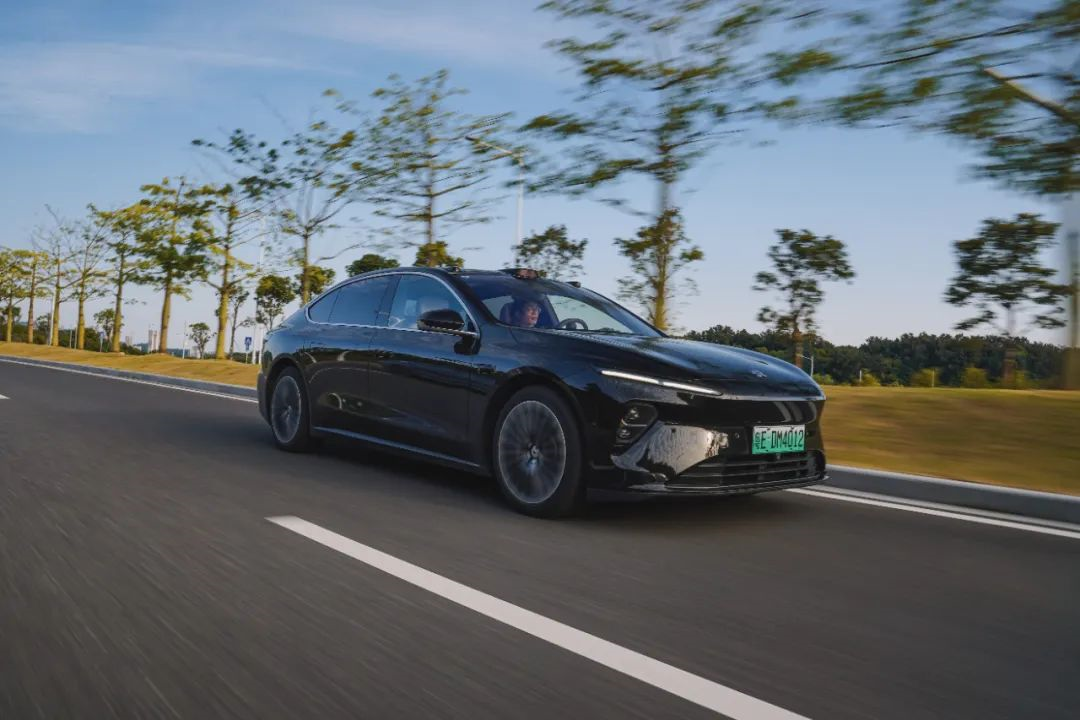
One is a new all-electric model from a traditional luxury brand, the other is the flagship sedan of the “new car-making” head, and the duel between them can be described as a needle against the wheat. Moreover, including terminal discounts, the prices of models with the same endurance level are just in the same range.
The advantage of EQE lies in Mercedes-Benz’s powerful brand image in the target consumer group and the level of “connotation” mechanical tuning. The advantage of ET7 lies in the intelligent driving experience, hardware advantages such as air suspension and laser radar, and the strong power of 3.8 seconds to break 100 km/h brought by four-wheel drive and dual motors.
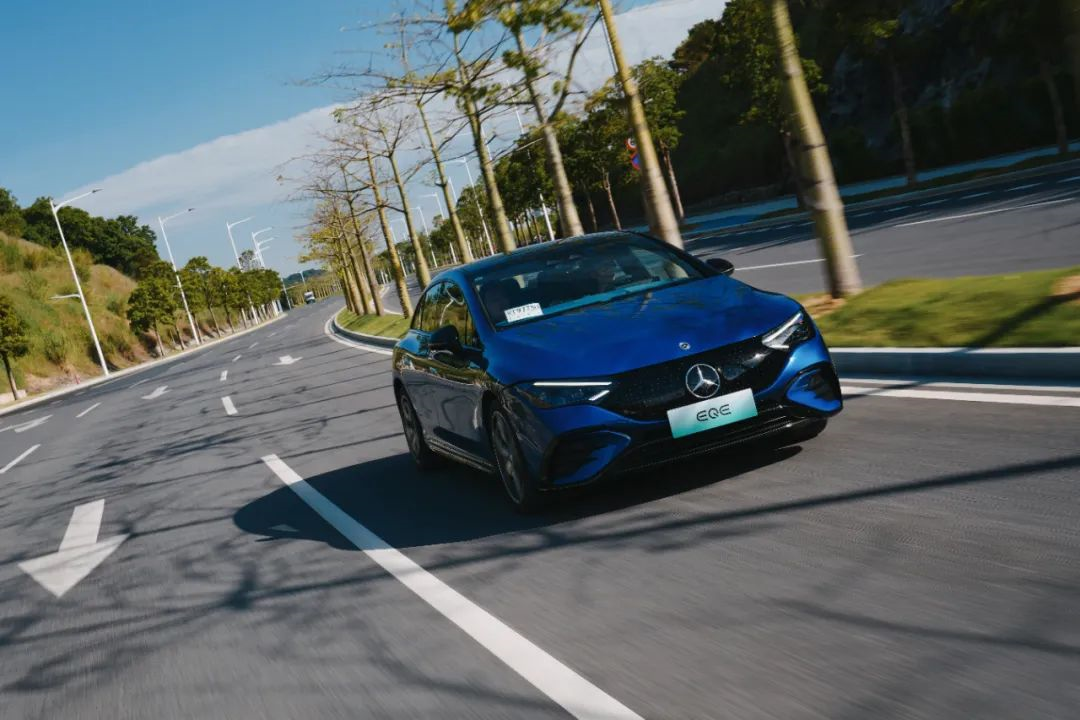
“A million of silence, a price of 500,000, and a power level of 200,000.” I want to summarize the product strength of EQE with such a sentence, which is relatively clear for potential consumers of traditional luxury brands.
For these consumers, brand image and technological precipitation will be their most important points of concern. EQE is undoubtedly a “good car” that meets their needs and has no obvious flaws in the minds of these consumers. But as long as they make a paper comparison with new models from “new forces” such as NIO ET7, perhaps they will also wonder:
“Well, does it have to be expensive?”
This article is a translation by ChatGPT of a Chinese report from 42HOW. If you have any questions about it, please email bd@42how.com.
